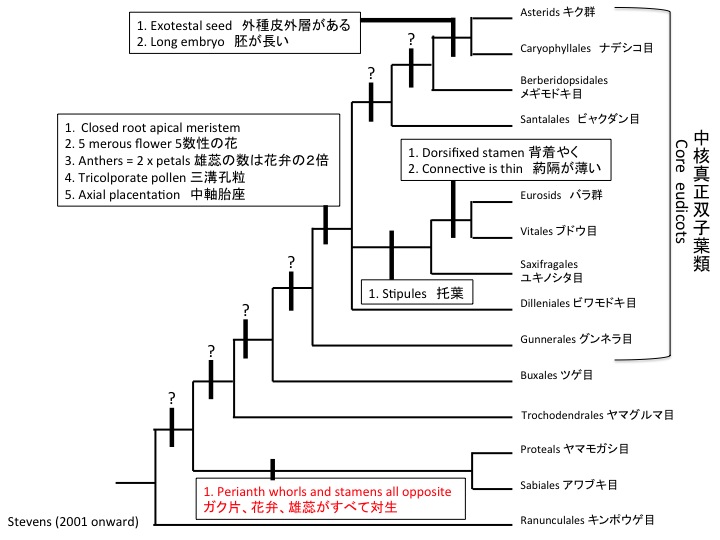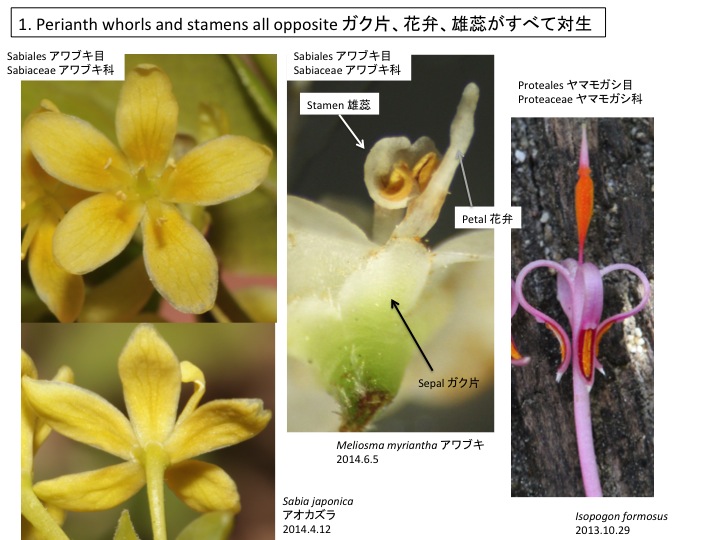アワブキ科はガク片、花弁、雄蕊がすべて互いに対生の位置にある。ヤマモガシ科は1輪の花被を持ち、花被片が雄蕊と対生している。被子植物では、ガク片、花弁、雄蕊が互いに互生の位置関係にあることがもっとも多いので、対生になるのは派生的形質である。アワブキ属の種の研究から、各器官原基は螺旋状に形成されるが、そのタイミングがずれるために対生になることが知られている(Wanntorp and Ronse De Craene, 2007)。真正双子葉類では、螺旋配列する花器官原基のできるタイミング、すなわち葉間期plastochronが短くなることによって輪になる(Endress 2011)。花器官の多様性を導く機構として、各々の花器官がどのようなタイミングで出来るか、即ち、葉間期の長さ、あるいは、葉原基成長のタイミング、の制御機構がわかると、花器官の多様性の多くの部分が説明できるようになると思う。
The Sabiales includes the Sabiaceae and the Proteaceae. Sepals, petals, and stamens are oppositely arranged each other in the Sabiaceae. In Proteaceae, each tepal is opposite to each stamen. Most eudicots have alternative arrangement and the opposite arrangement is synapomorphic in the Sabiales and Proteales. Floral organs are spirally formed and the opposite arrangement is caused by the change of plastochron length in Meliosma in the Sabiaceae (Wanntorp and Ronse De Craene 2007). A whole structure of floral organs in eudicots is formed because the length of plastochron is shorten (Endress 2011). If we know the molecular mechanisms to regulate plastochron length, we will be able to understand how diversity of floral organ arrangement evolved.
Endress (2011) Evolutionary diversification of the flowers in angiosperms. Amer. J. Bot. 98: 370-396.
Wanntorp L., Ronse De Craene L.P. (2007) Flower development of Meliosma (Sabiaceae) – evidence for multiple origins of pentamery in the eudicots. Amer. J. Bot. 94: 1828–1836.
<Sabiales アワブキ目; Sabiaceae アワブキ科; Sabia japonica アオカズラ; Meliosma myriantha アワブキ; Proteales ヤマモガシ目 Proteaceae ヤマモガシ科: Isopogon formosus>


